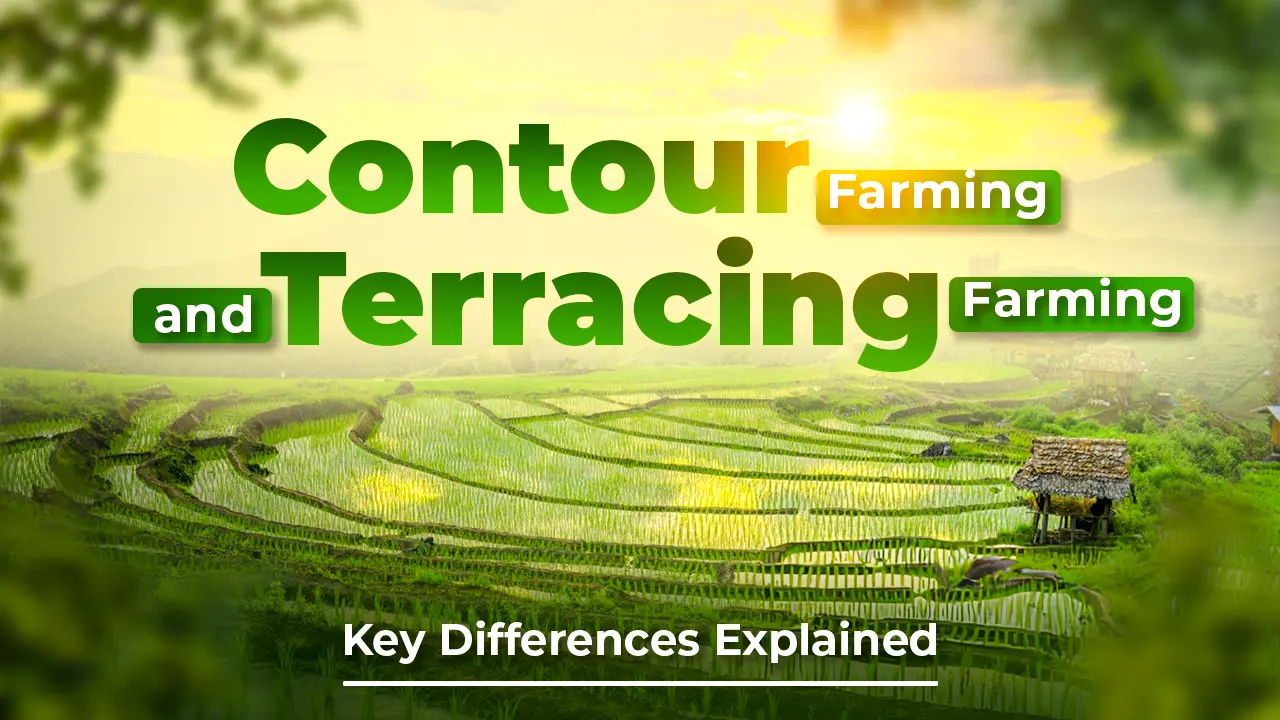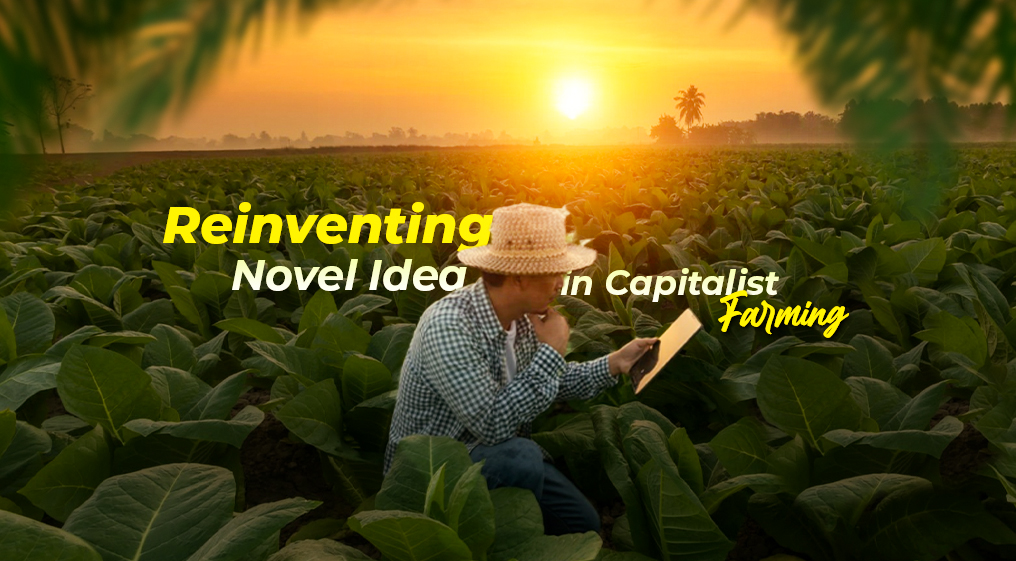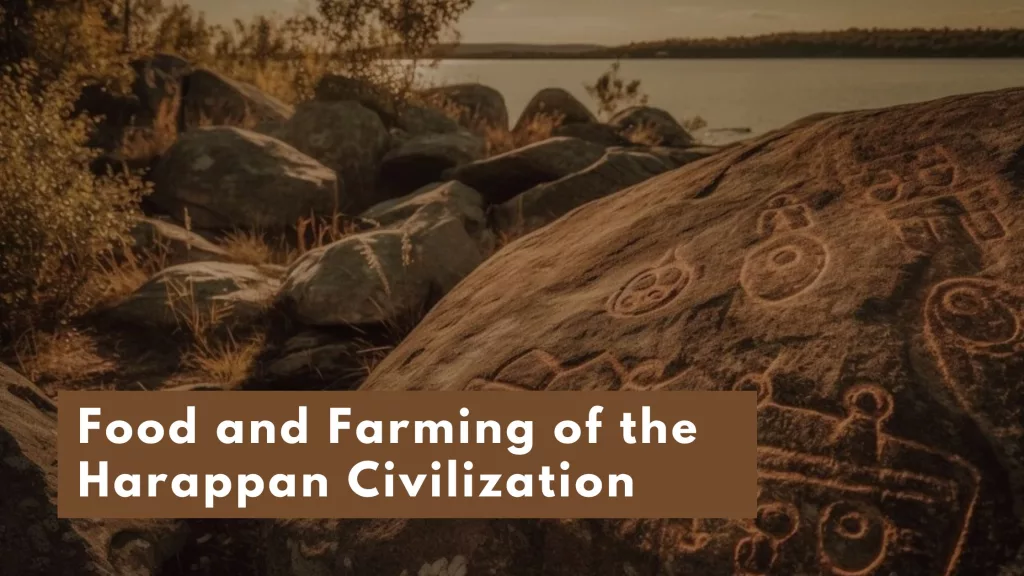While India holds the world’s second-most agricultural land, it does not provide equal ease of cultivation in farming for everyone. Water scarcity, soil degradation, challenging terrain, and erratic climate change have always been pressing issues when trying to maximize the yield for community consumption and exports. In such contexts, understanding the difference between contour farming and terrace farming becomes crucial, as both techniques offer sustainable solutions for farming on uneven terrains.
Hence, there has been a need to invest in innovative agricultural practices. Among these techniques, contour farming and terrace farming stand out as effective methods, perfect for turning those sloped regions and challenging hills into thriving land.
However, contour farming and terracing farming aren’t carbon copies of each other, They differ in purpose, procedures, and are utilized for different benefits. In this blog, let me help you understand them a little better.
What Are Contour Farming and Terracing Farming?
Let’s start building toward achieving clarity regarding the key differences between contour farming and terrace farming, by properly defining them first, in terms of both purpose and procedure, to set the right foundation.
Terrace Farming
“Terrace” in the practice of terrace farming is an umbrella term encompassing both sloping land and stepped platforms. Given that more than 30% of the land in the Indian subcontinent is hilly in nature, these practices have allowed farming communities to thrive for ages. One advantage of terrace farming is the barrier it creates, which is capable of slowing down water runoff, reducing erosion, and creating microclimates that are beneficial for crop growth. With the goal of transforming unusable land into productive farming plots, terrace farming allows for the cultivation of a variety of crops.
How Farmers Setup Terrace Farms
- Step 1: First and foremost, the foundation begins with preparing the land, meaning rocks, shrubs, and any trees that might drain all the nutrients from crops. This is a crucial step because farms in hill regions are not standard farms that a farmer can visit for daily upkeep. Hence, there is a need to assess the soil and determine the possibility of additional erosion during construction.
- Step 2: The next step begins with ensuring proper alignment for each terrace. Farmers here need to map the slope’s contours and find gaps that might cause the water to flow off the terrace farm. With this data, farmers need to determine the spots for maximum sunlight and nutrient intake to maximize the potential using that arrangement.
- Step 3: All right, now we are ready to move to actual construction. Firstly, using stones, concrete, or earth, wall in boundaries that are sturdy enough to hold the soil and water, regardless of how heavy the rainfall is on the land. Under no circumstances should water flow off the farm during or after the monsoon season.
- Step 4: Now, we are ready for cultivation. Regardless of whether you are a practitioner of conventional or organic farming in India, it is imperative that you use nutrient-rich compost or manure for your terrace farm. As stated above, these farms are often hard to care for daily; hence, building the foundation for growth is the only way to ensure a good yield.
Contour Farming
“Contour farming,” similarly, refers to the practice of creating and using furrows as barriers to slow down water flow, allowing crops to seep into the soil rather than washing away vital nutrients. Thanks to this focus, water infiltration rates in contour farming are upward of 30%. Farming communities in Uttarakhand and Himachal Pradesh have seen a lot of success with this practice, cultivating maize, pulses, and wheat for both consumption and export to the Indian subcontinent. In short, Terrace farming and contour ploughing while both create steep slopes, contour ploughing maintains the natural form of the chosen farmland.
How Farmers Setup Farms For Contour Farming
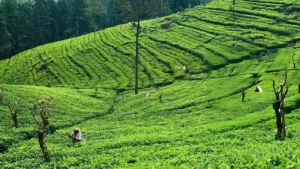
- Step 1: Similarly, for contour farming, the foundation for the farm begins with mapping out the farm using topographic maps or field surveys. A farmer also needs to determine where to develop ridge lines to ensure sufficient height for water retention. Once slope length and grade are determined, basic land preparation comes next. Clear the land to ensure no trees or rocks are in the way.
- Step 2: Next, it’s time for plowing along the contour, the technique that gives this practice its name. Farmers here follow the natural curve of the slope to carefully create furrows and ridges. The main focus here is on directing water from rainfall directly toward the soil, rather than letting it flow down, reducing runoff and enhancing crop yields across moderate slopes.
- Step 3: Next comes double-checking to avoid runoff and erosion. Each furrow’s efficiency in trapping water is essential for the future nourishment of the crop. Any mistake in the furrows during rainfall can cause water not only to run off the ridge, but also to destroy other furrows with overflowing water.
- Step 4: Finally, it is time to use its recognized zigzag pattern, which ensures more water retention and reduces compaction. This is a core element of the practice that ensures proper root growth and water absorption for each crop.
Contour Farming vs Terrace Farming: Key Differences
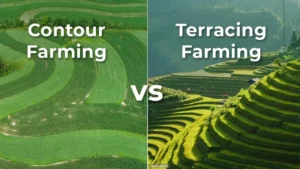
Alright, now that we have properly established the difference between contour farming and terrace farming in terms of definition and implementation, it is time to get into the meat of the story and finally look at the distinct characteristics and advantages.
Cultural and Historical Context

Let’s start with the deep historical roots of these practices. Terrace farming has been practiced for centuries in Indian mountainous regions. Not only is it a top source for communities to grow crops for local consumption, but it laid the foundation for exports from this region. Contour plowing, in comparison, is much more of a modern reinterpretation of this technique, with a new focus on long-term sustainability.
Applicability to Terrain
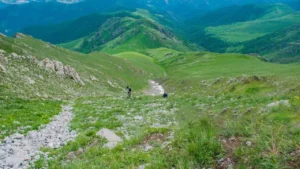
30% of all land in India is mountainous in nature. These lands are predominantly filled with steep and hilly terrains, meaning for farmer in India, there is also a risk of landslides involved. However, by relying on practices such as terrace farming, this issue of soil erosion can be tackled with specific steps like structures. Contour plowing, in comparison, while still serving the similar purpose, also has an additional benefit: it is much more flexible and can be applied to various landscapes.
Crop Yield Variability
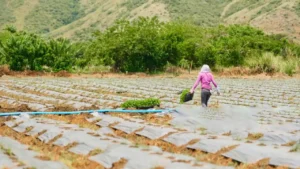
When it comes to realizing the full potential for yield, while out of contour farming and terracing farming terrace farming is the go-to choice in almost all the hilly regions of India, the actual increase in yield is often limited by outside factors, such as the weather. Compared to this, contour ploughing has shown higher yield improvement by simulating optimum conditions with a focus toward better water management.
Labor and Resource Requirements
Of course, farming isn’t just about theoretical knowledge; initial labor and resources are essential to even set the foundation. When we talk about the difference between contour plowing and terrace farming in terms of labor and initial resources, terrace farming typically requires more initial labor. In contrast, contour plowing is much easier to cultivate since it adapts existing land without significant alteration other than simple rock and tree removal.
Long-Term Sustainability
Contour Farming
In the long run, contour farming is great for enhancing soil health and giving it a more robust structure. Thanks to nature, over time it also reduces the overall sediment runoff into nearby water bodies, ensuring growth for a long time. So, when it comes to difference between contour farming and terrace farming, in areas with slopes of up to 4%, contour ploughing practice has improved not only agricultural resilience, but also the economic growth of the state.
Terrace farming
Terrace farming has already proven its worth and long-term sustainability to the world. Not only has it led to a significant reduction in soil erosion, but it directly leads to agricultural productivity increases of up to 30%. It is also imperative in hilly regions for conserving biodiversity. Overall, by transforming these steep lands into arable plots, terrace farming has helped maintain the landscape and ensure the long-term viability of farming communities in India.
Last Thought
Well, there you go! Hopefully, the knowledge helped clarify for you the key difference between contour farming and terrace farming. The difference between contour ploughing and terrace farming lies in their approach adopted by the farming communities; terrace farming and contour ploughing rely on different methodologies and approach for managing land.
In short, both contour ploughing and terrace farming are similar in purpose and usability, but they aim to achieve different goals for the hill farming communities of India. Understanding the difference between terrace farming and contour ploughing is essential for effective agricultural practices.
Got something to say? Share your favorite contour farming and terracing farming secrets we should know.

